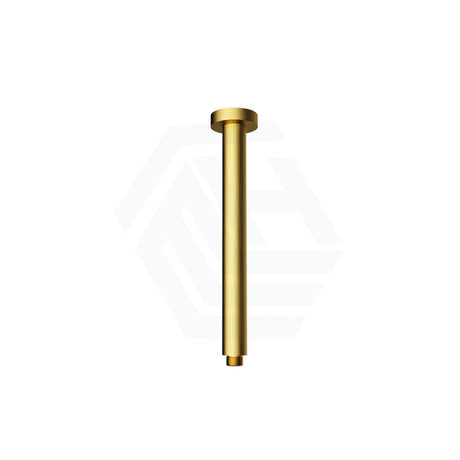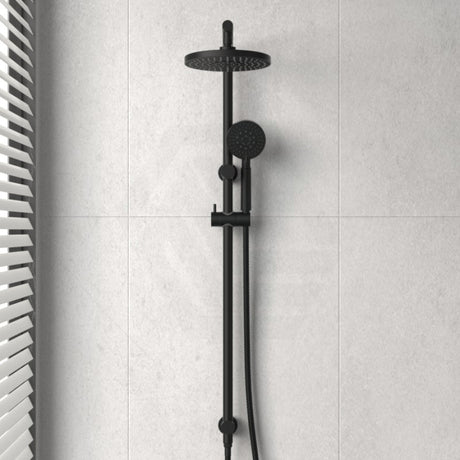11 November, 2025
No Hot Water in Shower? A Guide to Causes and Fixes
No hot water in shower? Troubleshoot water heater issues like tripped breakers or failed cartridges. Learn simple DIY fixes and prevention tips for reliable hot showers.

Nothing’s worse than turning on the shower and getting only cold water. No hot water in shower is a problem that can ruin your morning fast. Most times, the issue comes from the water heater or the shower parts. This guide will walk you through what to check, simple things to try, and when to call in a pro. Let’s get started.

Causes and Fixes for No Hot Water in the Shower
Before trying to fix anything, check where the problem starts. Turn on the hot water in your kitchen and bathroom sinks. If you don’t get hot water anywhere, your main water heater is likely the issue. But if hot water works in the kitchen sinks, then the problem is just with your shower. Let’s look at what could be causing each situation and how to fix it.
If No Hot Water is Available Anywhere
When your entire house lacks hot water, the issue is central. Focus your attention on the water heater.
1. Electric Water Heater Issues An electric heater uses powerful heating elements. Check your home's main circuit breaker panel. Find the breaker labeled "Water Heater" (it is often a large, "double-pole" breaker). If it is tripped (in the middle or "OFF" position), reset it once. If it trips again, do not touch it; this signifies a more complex electrical problem.
2. Gas Water Heater Issues A common problem with a gas heater is an extinguished pilot light. This small, constant flame is needed to ignite the main burner. Check the instructions on the side of your tank to see how to safely inspect and relight the pilot.
3. Thermostat Settings The thermostat on the water heater itself might be set too low. Someone may have turned it down accidentally. The recommended setting is typically 120°F (49°C).
4. System Failure Water heaters have a limited lifespan (usually 8-12 years). Internal components can fail. In an electric heater, the heating element may have burned out. In a gas heater, the thermocouple or the gas valve might have failed. These issues typically require professional repair.
If Hot Water Works Everywhere Except the Shower
This is a common scenario. It tells you the water heater is likely working, but the hot water is being blocked at the shower faucet. The culprit is often inside the shower handle.
1. Failed Mixing Valve Cartridge This is a likely cause. The cartridge is the internal part of your faucet that blends hot and cold water as you turn the handle. These cartridges wear out, and the internal seals or plastic components can break. When they fail, they often get stuck, blocking the hot water inlet.
Fix: The solution is to replace the cartridge. Turn off the main water first, then remove the shower handle and faceplate. Pull out the old cartridge and put in the new one. It’s a simple DIY job, but you’ll need to be careful and follow the steps closely.
2. Incorrect Anti-Scald Device Setting This feature is also called a "high-limit stop." It is a safety device, often a small plastic ring, located behind the handle. Its job is to physically stop you from turning the handle too far to the hot side, preventing burns. If this device is set too conservatively, it stops the valve from opening the hot water port enough. Fix: This is often a simple adjustment. After removing the faucet handle, you can see this plastic stop. You can typically adjust it by hand or with a small screwdriver to allow for a greater range of motion toward the hot side.
3. Clogged Valve or Pipe In some cases, sediment or mineral buildup (scale), the same white crust you might see on your showerhead, can break loose and clog the hot water inlet pipe or the mixing valve itself. This is more common in areas with hard water or if the plumbing is old.
Fix: This is more complex and may require "back-flushing" the valve (forcing water backward through it) or disassembling the valve completely to clean it.

When Professional Help Is Needed?
While some fixes are simple, do not risk your safety or cause more damage. Water and electricity (or natural gas) can be dangerous. Call a licensed plumber or electrician immediately if you notice these situations:
- The water heater's circuit breaker trips repeatedly.
- You smell gas near your water heater. Leave the house and call your gas utility's emergency line from a safe distance.
- You see water leaking from the water heater tank itself. This often means the tank has corroded and requires full replacement.
- You are not comfortable replacing the shower's mixing cartridge. It can be difficult to remove, and using the wrong part can cause leaks inside the wall.
- You replace the cartridge, but the problem persists.
- Your water is only lukewarm, not cold. This can signal a failing heating element or a crossover problem in your plumbing.
Tips for Preventing Future Hot Water Problems in Your Shower
Consistent maintenance is an effective way to help ensure you have reliable hot water hot shower. Prevention saves you time and money.
- Flush Your Water Heater Annually: Drain a few gallons of water from the bottom of the tank each year. This clears out sediment that can lower efficiency or damage the heating element. If you live in an area with hard water, do this more often.
- Test the TPR Valve: The Temperature-Pressure Relief (TPR) valve keeps your tank safe. Lift the small lever once a year to make sure water flows freely. If it’s stuck, replace it. A working valve helps prevent serious tank problems.
- Check the Anode Rod: Inside your water heater is a metal rod that attracts minerals and stops the tank from rusting. Have a plumber check it every three to four years and replace it when needed. This helps your heater last longer.
- Insulate Hot Water Pipes: Wrapping the hot water pipes (especially those in cold basements or crawl spaces) with foam insulation reduces heat loss. It delivers hotter water to your shower and saves energy.
- Address Hard Water: If your home has hard water, mineral scale will damage mixing cartridges and clog fixtures. Installing a whole-home water softener is a good long-term solution to protect all your plumbing fixtures.
Conclusion
Finding no shower hot water is an inconvenience. The first step to fixing it is to identify the source. By checking your sinks, you can determine if the problem is with the main water heater or just the shower faucet. Simple fixes like resetting a breaker or adjusting an anti-scald device can be straightforward. However, do not hesitate to call a professional for issues involving gas, complex electrical faults, or leaks. Regular maintenance on your water heater is an effective strategy to keep the hot water flowing reliably.










